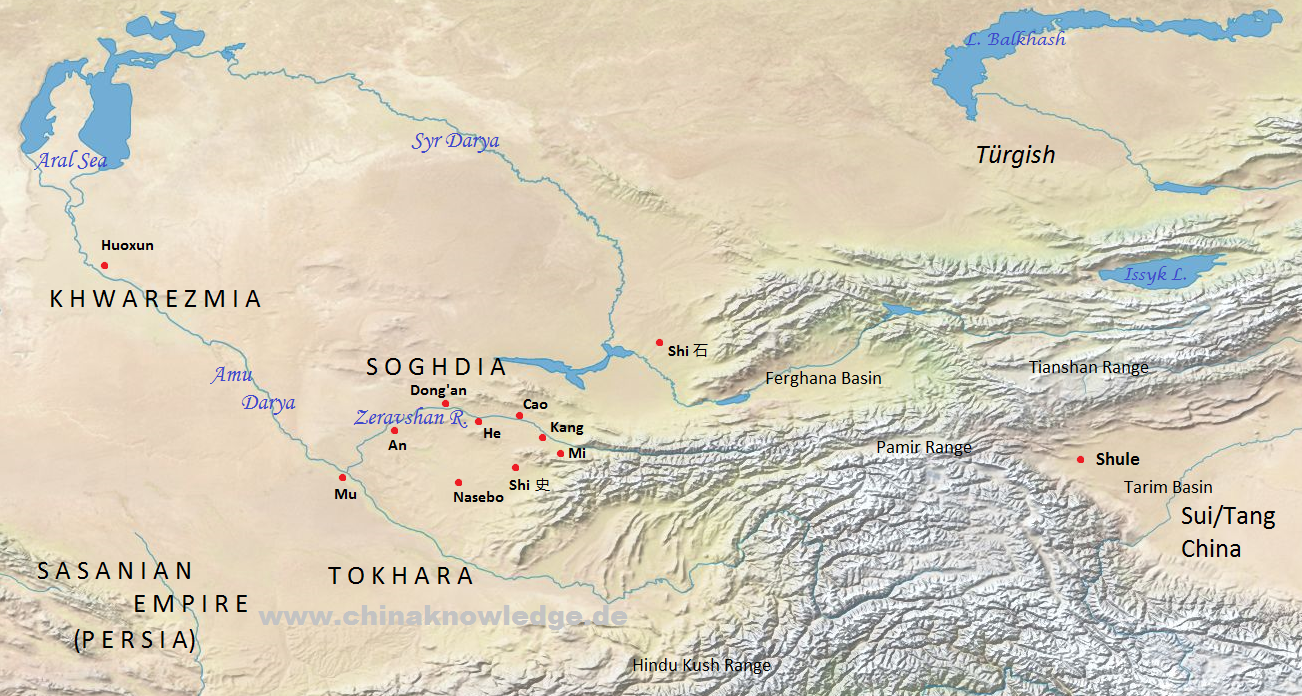The state of Shiguo 石國, short for Zhezhe 柘折 (also called Zhexi 柘析, Zheshe 者舌 or Zheshi 赭時), was located in the region of Toshkent (Tashkent) in modern Uzbekistan, a land formerly known as Soghdia or Soghdiana, in Chinese Sute 粟特. It was also transliterated as Zheshe 者舌, Zhezhi 柘支, Zheshi 赭時 or Chache 察赤. In Arabian and Persian sources it is called Shasi (沙胥?), and in the geography of Ptomelaios, known as Shita (?). According to traditional reports the city was founded by one of the Nine Tribes from Zhaowu (Zhaowu jiuxing 昭武九姓). It was located at the banks of River Yaosha 藥殺水 (today known as Syr Darya, in Chinese Xi'er 錫爾河) and had a circumference of more than 5 km. The region produced horses and various types of grain.
 |
The Soghdia around 600 CE. Based on Tan Qixiang 譚其驤, ed. (1995), Zhongguo lishi ditu ji 中國歷史地圖集, Vol. 5, Sui, Tang, Wudai Shiguo shiqi 隋唐五代十國時期 (Beijing: Zhongguo ditu chubanshe, 1996). |
In the sixth centry the state of Shiguo was dominated by the khanate of the Western Türks, but merchants from Shiguo in 609 brought tributes to the court of the Sui dynasty 隋 (581-618). In 658 the armies of the Tang empire 唐 (618-907) conquered the country of Shiguo, and it became the seat of the area command (dudufu 都督府) of Dayuan 大宛, with the king of Shiguo as area commander-in-chief (dudu 都督). The area thus became part of the Protectorate of the Pacified West (anxi duhufu 安西都護府).
In 740 the ruler of Shiguo was officially made a prince of the Tang empire and granted the title of King Shunyi 順義王. King Shunqi fought against Muslim troops that invaded Central Asia. General Gao Xianzhi 高仙芝 later arrested the king of Shiguo and so caused a widespread rebellion among the Western Territories. In 751 the whole region was conquered by Muslim invaders.